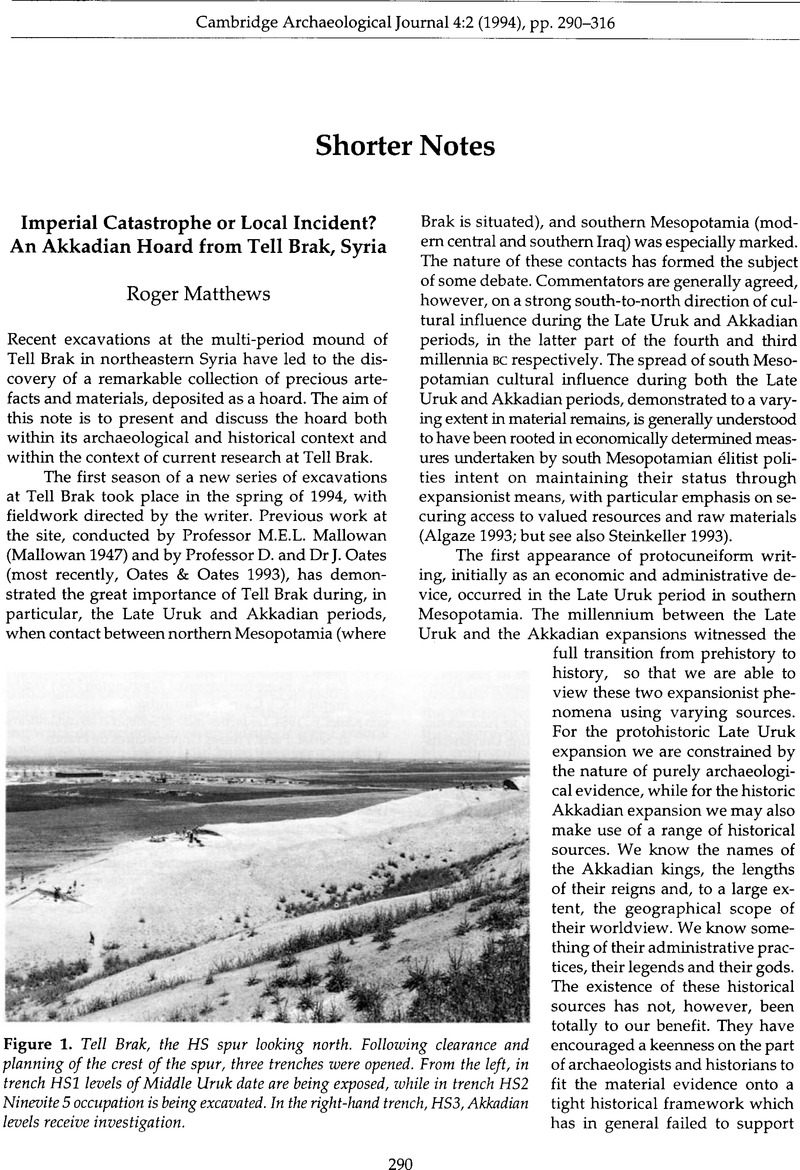Crossref Citations
This article has been cited by the following publications. This list is generated based on data provided by Crossref.
Courty, Marie-Agnès
and
Weiss, Harvey
1997.
Third Millennium BC Climate Change and Old World Collapse.
p.
107.
Matthews, W.
French, C. A. I.
Lawrence, T.
Cutler, D. F.
and
Jones, M. K.
1997.
Microstratigraphic traces of site formation processes and human activities.
World Archaeology,
Vol. 29,
Issue. 2,
p.
281.
Weiss, Harvey
1997.
Third Millennium BC Climate Change and Old World Collapse.
p.
711.
2012.
A Companion to the Archaeology of the Ancient Near East.
p.
1117.
Heymans, Elon D.
2021.
The Origins of Money in the Iron Age Mediterranean World.



